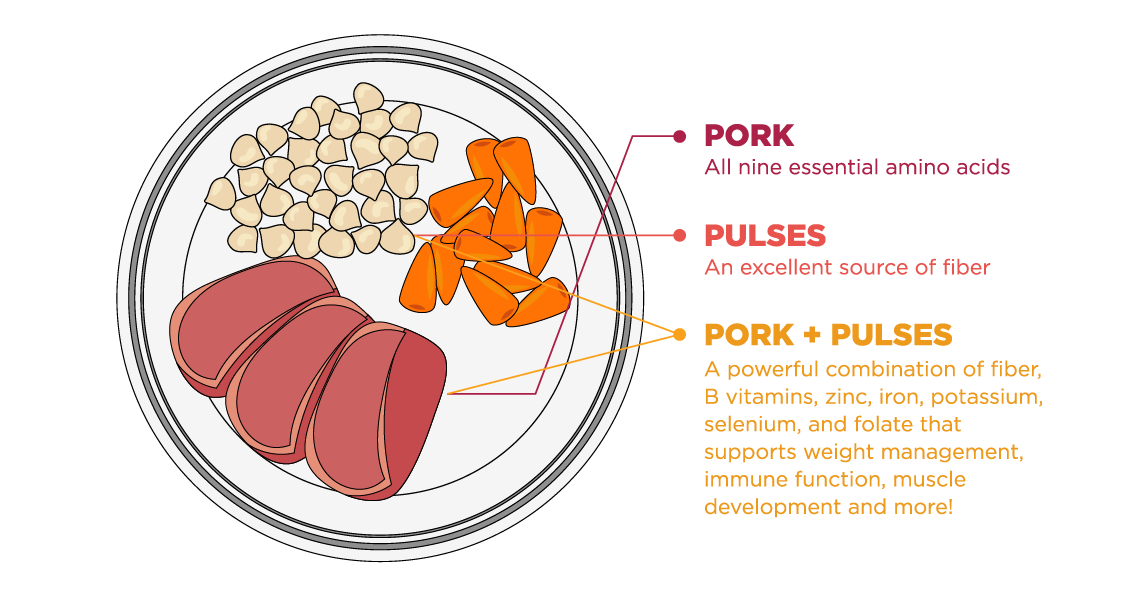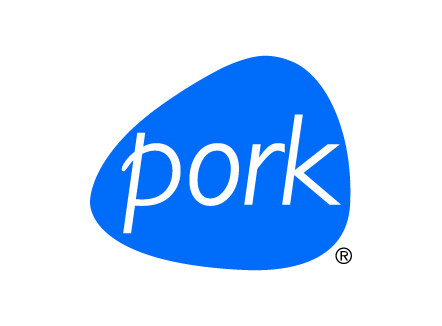
|

|
Research shows that eating family
meals improves cohesion,
communication, and relationships,
helping us celebrate the good times
and better manage
challenges.
Research also shows that increasing the
frequency of family meals is linked to
many benefits including higher grades,
better self-esteem, stronger emotional
health and more.1,2,3,4,5
|

|
|
Moreover, people who frequently cook
meals at home eat healthier and consume
fewer calories.6
As an added bonus, cooking together as a
family can create life-long memories and
novel family recipes that pass through
the generations.
|

|
|
Powerful Pairings, like pork and
pulses, are an ingenious, delicious
combination that adds important
nutrients to help us better manage
health challenges.6
|

|
|
Pork is a complete protein that packs a
powerful nutritional punch, providing
all nine essential amino acids7
including leucine, which helps rebuild
and repair muscles.8,9
|
|
Protein is important for maintaining
muscle mass, supporting bone health, and
giving you energy throughout the
day.10,11
An excellent source of fiber and
iron-rich, pulses come in a variety of
forms including chickpeas, lentils, dry
peas and beans and help with satiety and
weight management.12
|

|
|
Family meals made with Powerful
Pairings empower us to celebrate the
joys of today and embrace the
uncertainties of tomorrow.
During National Family Meals Month and
beyond, power up your plate and your
palate with delicious
Powerful Pairings including pork
and pulses.
|

|

|

|
-
Horning ML, Fulkerson JA, Friend
SE, Neumark-Sztainer D.
Associations among Nine Family
Dinner Frequency Measures and
Child Weight, Dietary, and
Psychosocial Outcomes. J Acad
Nutr Diet. 2016;116(6):991-999.
-
Utter J, Denny S, Peiris-John R,
Moselen E, Dyson B, Clark T.
Family Meals and Adolescent
Emotional Well- Being: Findings
From a National Study. J Nutr
Educ Behav. 2017;49(1):67-72
e61.
-
Leeman J, Crandell JL, Lee A,
Bai J, Sandelowski M, Knafl K.
Family Functioning and the
Well-Being of Children With
Chronic Conditions: A
Meta-Analysis. Res Nurs Health.
2016;39(4):229-243.
-
Moens E, Braet C, Soetens B.
Observation of family
functioning at mealtime: a
comparison between families of
children with and without
overweight. J Pediatr Psychol.
2007;32(1):52-63.
-
Patton SR, Piazza-Waggoner C,
Modi AC, Dolan LM, Powers SW.
Family functioning at meals
relates to adherence in young
children with type 1 diabetes. J
Paediatr Child Health.
2009;45(12):736-741.
-
Julia A Wolfson, Sara N Bleich.
Is cooking at home associated
with better diet quality or
weight-loss intention? Public
Health Nutrition, 2014; 1 DOI:
10.1017/S1368980014001943
-
https://www.ars.usda.gov/ARSUserFiles/80400535/Data/Meat/Pork09.pdf
-
https://www.nal.usda.gov/sites/www.nal.usda.gov/files/leucine.pdf
-
Rieu I, Balage M, Sornet C, et
al. Leucine supplementation
improves muscle protein
synthesis in elderly men
independently of
hyperaminoacidaemia. J Physiol.
2006;575(Pt 1):305-315.
doi:10.1113/jphysiol.2006.110742
-
Strasser, B., Volaklis, K.,
Fuchs, D., & Burtscher, M.
(2018). Role of Dietary Protein
and Muscular Fitness on
Longevity and Aging. Aging and
disease, 9(1), 119–132.
https://doi.org/10.14336/AD.2017.0202
-
https://www.choosemyplate.gov/eathealthy/protein-foods/protein-foods-nutrients-health
-
https://www.choosemyplate.gov/eathealthy/vegetables/vegetables-beans-and-peas
|
|








